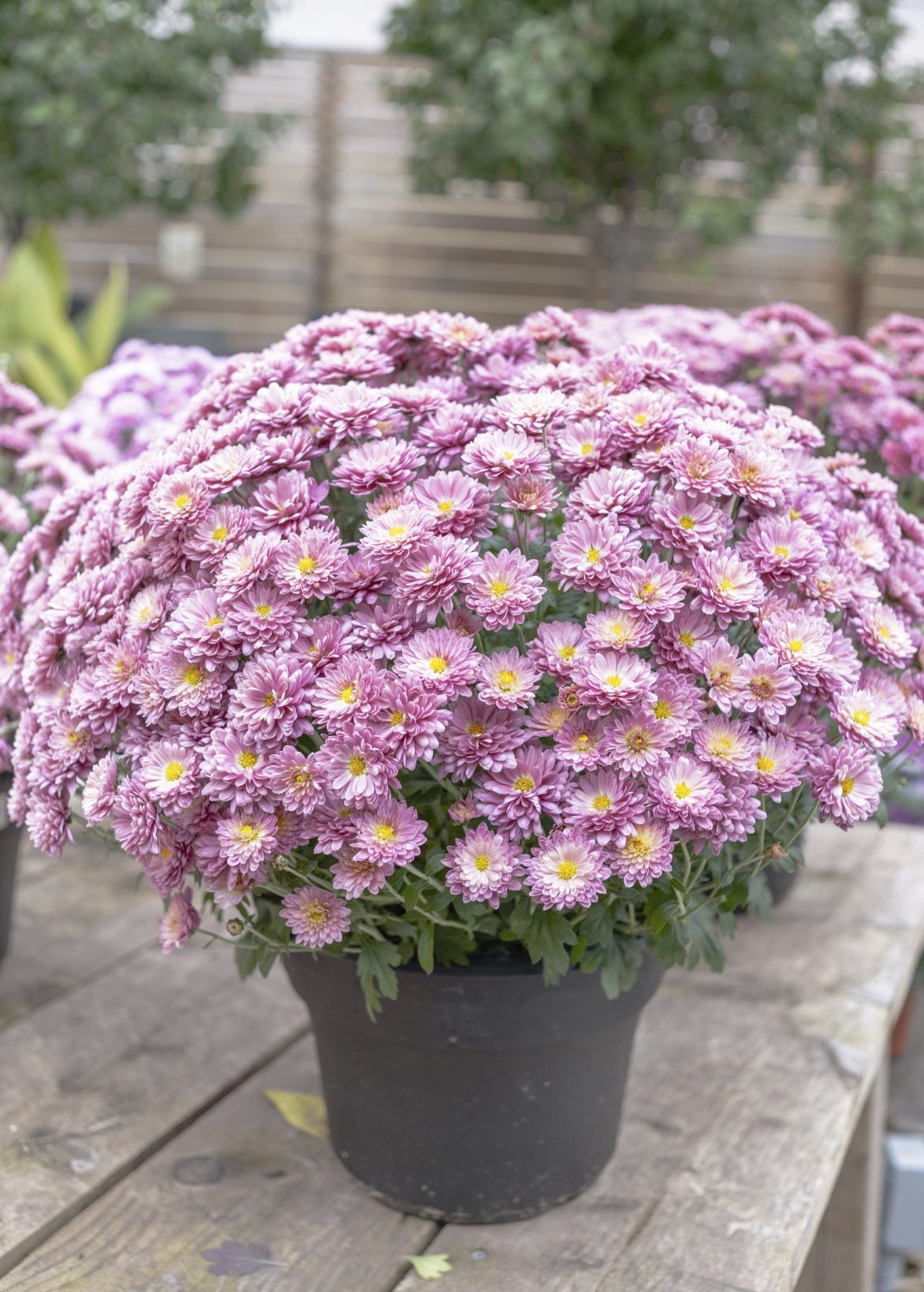Growing Mums In Containers: How To Grow Mums In Pots


Growing mums (also called chrysanthemums) in containers is extremely popular, and rightly so. The plants bloom well into the fall, and as you get later in the season, containers of them spring up for sale everywhere. Care of container grown mums can be a little tricky, though, and if left to their own devices, they can easily die off before their time. If you follow some simple rules of chrysanthemum container care, however, you should be able to enjoy their blooms throughout the fall and possibly even the next spring. Keep reading to learn about growing chrysanthemums in pots.
How to Grow Mums in Pots
When growing mums in containers, half the battle takes place before you even get the plant home. Since mums are so popular in the fall, you can buy them at all kinds of stores that may not necessarily know about or even practice good plant care. Even at garden centers and nurseries, plants can be severely underwatered, and mums, in particular, can dry out very easily. Don’t buy a plant that’s wilted, and if at all possible, ask someone at the store when they’ll be getting their next shipment of chrysanthemums. Go back on that day and buy the healthiest looking plant you can find, before it has to sit around at the mercy of a waterer who may not give it the attention it deserves. Also, try to get a plant that has more buds than open flowers.
Care of Container Grown Mums
Chrysanthemum container care continues when you get home. One of the best things you can do for your mum is repot it. Move it to a slightly larger container with good, fertile potting soil. Gently remove it from its store pot and break the roots up as best as you can - odds are they’re in a very tight ball. Whether you repot it or not, your chrysanthemum is going to want a lot of water. Since its root ball is probably very tight, set the pot in a dish of water for a few hours rather that watering from above - this gives the roots a better chance of soaking up the water. Make sure to take it out of the dish after a few hours, though, or the plant could drown. From then on, you can water from above every day or so. Growing chrysanthemums in pots requires plenty of sun, so place your container in a south-facing window or a spot outside that receives at the very least 4 hours of sun per day. Remember that your sunny summer spots may be much more shaded in the fall. Keep an eye on your mum for the first few days and make sure it’s getting plenty of sunlight. Fall mums aren’t generally meant to survive the winter, but try cutting it down and heavily mulching it, or moving it to an unheated garage until spring. You might be pleasantly surprised to find your mum has overwintered beautifully.
Gardening tips, videos, info and more delivered right to your inbox!
Sign up for the Gardening Know How newsletter today and receive a free copy of our e-book "How to Grow Delicious Tomatoes".

The only child of a horticulturist and an English teacher, Liz Baessler was destined to become a gardening editor. She has been with Gardening Know how since 2015, and a Senior Editor since 2020. She holds a BA in English from Brandeis University and an MA in English from the University of Geneva, Switzerland. After years of gardening in containers and community garden plots, she finally has a backyard of her own, which she is systematically filling with vegetables and flowers.
-
 Grow ‘Karl Rosenfield’ Peony Plants For The Ultimate Frilly Border Beauties And Cut Flowers
Grow ‘Karl Rosenfield’ Peony Plants For The Ultimate Frilly Border Beauties And Cut FlowersFor frilly double magenta peony petals infused with a heady fragrance, grow ‘Karl Rosenfield’ peony plants. Here’s how to cultivate the ultimate plushy blooms
By Tonya Barnett
-
 10 Common Composting Problems That Can Spoil Your Garden Gold – Plus Easy Fixes
10 Common Composting Problems That Can Spoil Your Garden Gold – Plus Easy FixesLearn how to troubleshoot common composting issues before they ruin your stash – from bad smells and bugs to materials not breaking down as they should.
By Susan Albert